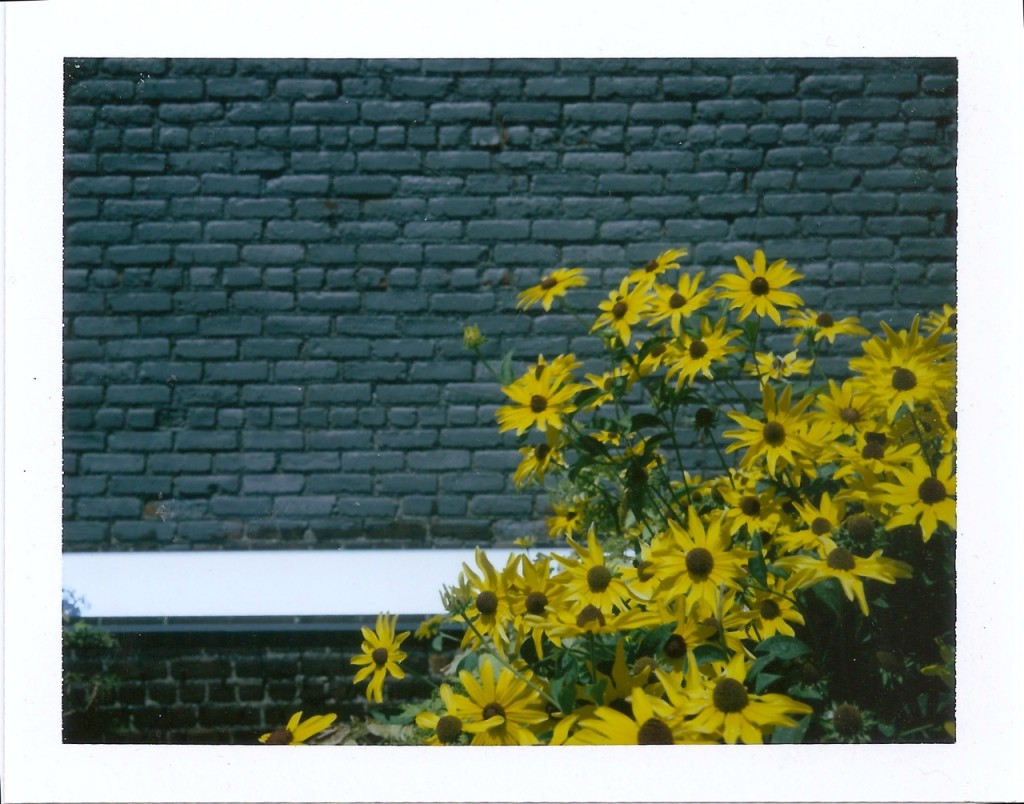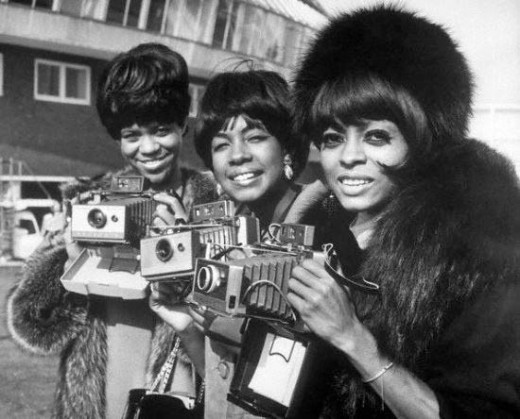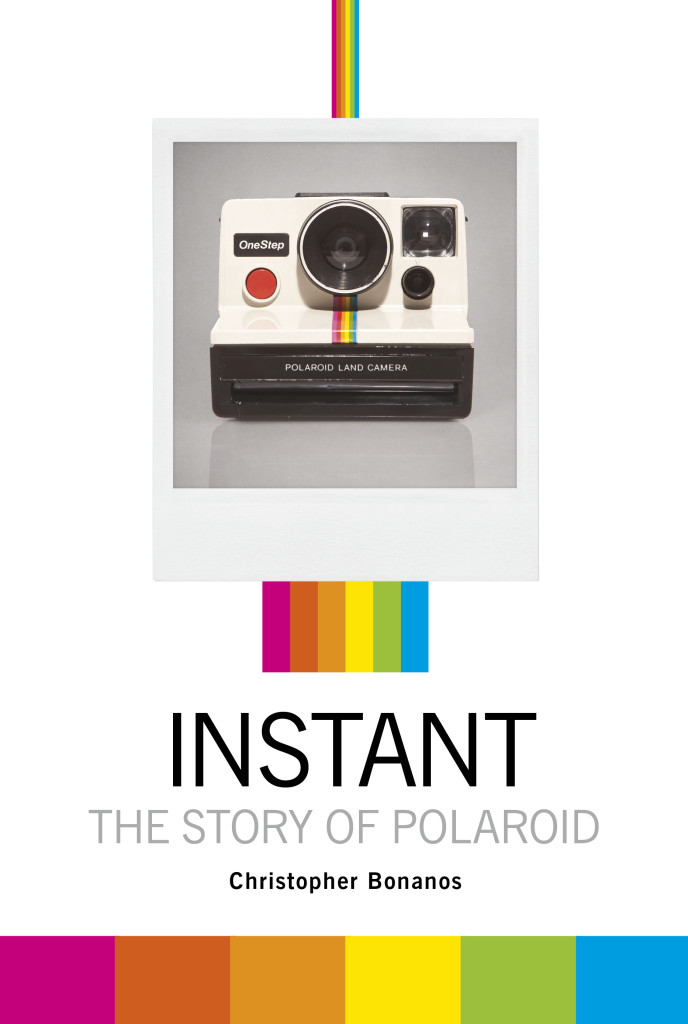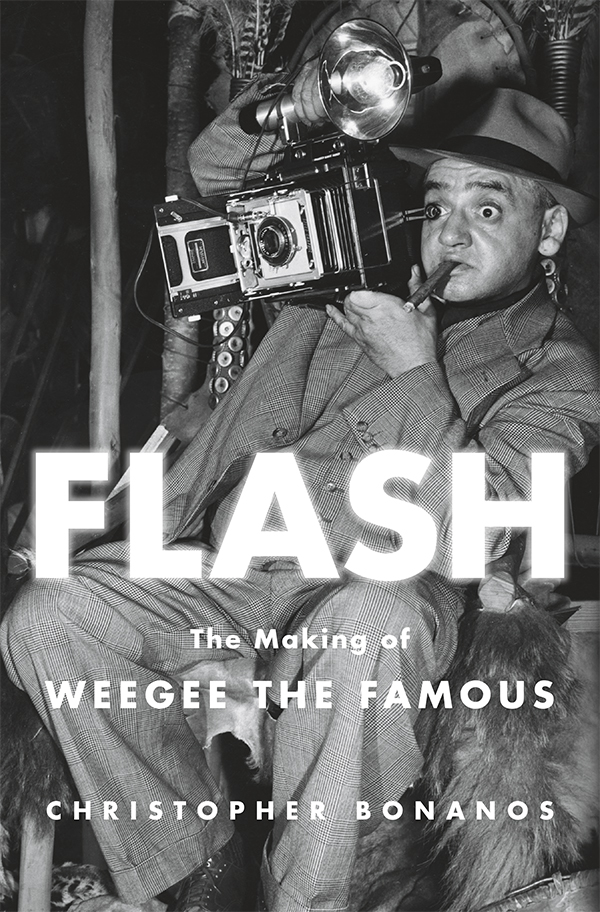Unknown photographer, undated, but the hair probably puts it in the mid-sixties. Maybe it’s coincidence, but Miss Ross has the most expensive camera of the bunch.
There aren’t a lot of days like this in life. First copy of the book arrived from Princeton Architectural Press this afternoon.
I couldn’t focus on a damn thing for the rest of the day. Though I did manage to take an instant photo of it. (On Impossible’s new no-shielding-required test film, by the way.)
We made a book trailer, and here it is. There’s a little treat in there: a few moments of film of Dr. Land, shot in 1970 and barely seen since. Plus, y’know, a lot of me talking.
This one even less meaningful than the last, but hey. It turns out that the recently cleared Polaroid site in Waltham, soon to be a shopping center, may contain… an Apple Store. It’s not a done deal yet (see the local report and its caveats here) but it certainly would be a story if Polaroid’s spiritual heir rented some of the old turf.
Though I can’t help pointing out that we’ll have traded good manufacturing jobs with pensions for retail positions for which the product is made in China. Better than losing the jobs altogether; far from ideal.
My father reported this story over the weekend: A friend was traveling by car, pulled out her iPad while in the passenger seat, and switched it on. Black screen. Flicked it off and on again. No display. Kept fiddling, and eventually resigned herself to a busted device. Until she knocked her sunglasses ajar, and the screen leapt to life.
They were polarizing sunglasses, and the iPad’s LCD contains a polarizing filter. Cross the axes of the two, and you get darkness. (That’s how the screen works: each pixel’s red-green-blue dots are lightened and darkened that way, by a fluid whose crystal orientation can be controlled with a tiny voltage.) Neat little demonstration here:
As readers of this blog probably know, that light-filtering material was the first invention of the very young Edwin Land, and the product on which his company was built. “Polaroid,” the word, referred for many years to that filter—it was a loose contraction of “polarizing celluloid”—and in the first decade-plus of the company, it had nothing to do with taking pictures.
I’ve written at some length about the parallels between Edwin Land and Steve Jobs, and it’s a neat, tiny, fitting, meaningless coincidence that Jobs’s final product depends on Land’s first. Every LCD does, not just Apple’s: If you for some reason are wearing sunglasses while watching your flat-screen TV, and tilt your head, it’ll black out too. Why you’d be sitting in your living room in sunglasses, rocking your head back and forth, is your business.
Black-eyed Susans and dark-gray brick on the High Line, on a July weekend not long ago.

Photography 101: Rule of thirds, good color mix, soft against hard. Plus that nice piece of white siding at lower left to anchor it. Tell me again that you can’t make a good picture with a Polaroid camera, huh?
LEGALITIES
This site is not connected with or endorsed by Polaroid or PLR IP Holdings, owners of the Polaroid trademark.ON TWITTER
My TweetsBlogroll
- 'Insisting on the Impossible'
- Everything Reminds Me of You
- Flickr's Polaroid group
- Instant Options
- LandCameras.com
- Paul Giambarba: Analog Photography At Its Best
- Paul Giambarba: The Branding of Polaroid
- Polaroid
- Polaroid SF
- Rare Medium
- The Impossible Project
- The Land List
- The New55 Project
- Vintage Instant







